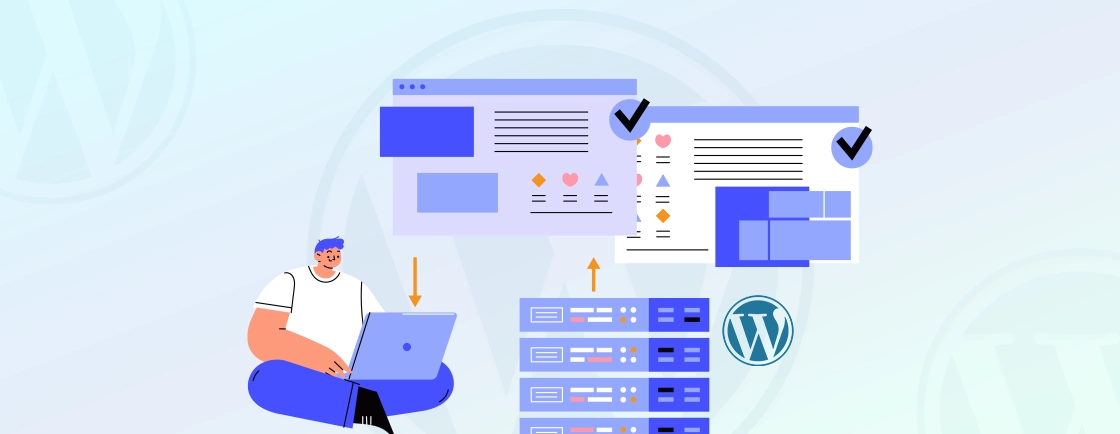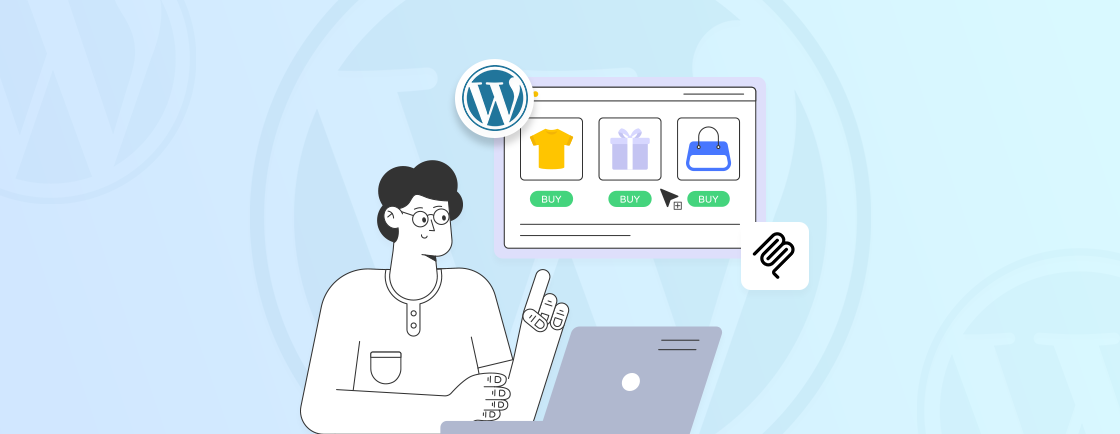Table of Contents
Since the launch of WordPress 5.0, Block editor has been the default for creating high-quality websites. It’s become the go-to editing experience for many users. But what if you still want to opt for the simplicity and familiarity of Classic Editor? It can help with a more user-friendly text-based interface. So, can you still use it?
Well, fortunately, yes. The Classic Editor is still here, offering an efficient way to create and edit content. You can install the plugin and configure the WordPress settings accordingly. And you can easily switch between Gutenberg and Classic editors based on the use case on your website.
In this blog, we’ll see why you might choose the Classic Editor and how the WordPress development services go about this process. Let’s begin.
What is WordPress Classic Editor?
Classic Editor used to be the default editor for WordPress till the Version 5.0. With it, you can have a simpler, more user-friendly editing experience. You can access it by installing a plugin called Classic Editor or even without it.
The Classic Editor functioned much like a traditional word processor. It had a text-based interface along with familiar formatting tools like bold, italics, headings, and bullet points.
Here’s a breakdown of the Classic Editor:
- Interface: Resembles a word processing program for text-based editing along with a toolbar for formatting.
- Focus: Primarily text-based editing, with features for adding images and media through separate buttons.
- Workflow: Well-suited for those comfortable with traditional writing software and for users who have built workflows around classic editor plugins.
While the block editor offers a more visual approach, the Classic Editor focuses on a simpler, text-centric experience. Plus, WordPress developers often choose the latter for its compatibility with older plugins and themes not functioning well with the block editor.
So you can shift between the classic and block editors, ensuring a smooth transition and workflow. Let’s see a few other reasons to choose the Classic Editor
Why Use the Classic Editor in WordPress?
There are a few reasons why you might prefer to use the Classic Editor in WordPress, even though the Gutenberg editor is the default. Here are the benefits that will answer your question:
- Familiarity: It provides the traditional TinyMCE interface that long-time WordPress users are accustomed to. This familiarity removes the need for learning, allowing users to create and edit content efficiently. It is beneficial for users preferring consistency and want to avoid the complexities of the Gutenberg block editor.
- Compatibility: Some older themes and plugins might not be compatible with Gutenberg, causing layout and functionality problems. If your website relies on these older themes and plugins, Classic Editor ensures a smoother experience.
- Simplicity: Classic Editor offers a simple WordPress site editing experience, which is good for users who find the block editor complex. Its simplicity makes it easier for users to focus on content creation with less number of options and settings. This is particularly useful for bloggers who want a clean editing experience.
- Control Over Formatting: With the Classic Editor, users have precise control over the formatting of their content. This control is beneficial for users who want to apply specific styles and structures to their posts and pages. Unlike the block editor, which uses WordPress blocks, the Classic Editor allows more customization.
- Gradual Transition: The Classic Editor enables users to switch between the classic and block editors. It allows for a gradual transition to the new editing system without fully committing to it. This flexibility is beneficial for users who want to use the block editor while also having the option to use the traditional interface.
- Accessibility: Some users find the Classic Editor more accessible and easier to navigate than the block editor. This can be especially important for those who rely on WordPress accessibility features.
The best choice depends on your individual needs and preferences. If you value simplicity, speed, and familiarity, the Classic Editor is a solid option. But, if you are looking for a more customized design, hiring WordPress developers is recommended. With their expertise, they can also Guttenberg editor to provide you with a more customized website. This flexibility becomes even more useful when you need to edit a WordPress site beyond basic content changes.
How to Use the Classic Editor in WordPress?
Using the Classic Editor in WordPress involves installing the Classic Editor plugin and configuring it. Follow these steps to get started:
Step 1: Navigate to your WordPress login page (typically found at your website.com/wp-admin). Then, enter your admin username and password to access the WordPress admin dashboard.
Step 2: In the WordPress admin dashboard, go to the Plugins menu on the left sidebar and click on Add New. Then find and install the Classic Editor plugin. After that, click the Activate button to enable the Classic Editor.
Step 3: Configure Classic Editor Settings
The next step once the plugin is installed and activated is to go to Settings and click on Writing. Here, you can configure how you want the Classic Editor to behave:
- Default Editor for All Users: Choose between classic editor and block editor as the default editor.
- Allow Users to Switch Editors: Enable or disable the option for users to switch between the classic editor and block editor.
Then, save your settings after making the desired changes.
Step 4: Create a new post or page; go to the Posts or Pages menu and click Add New. You will see the TinyMCE editor interface, where you can add content, format text, and use other editing tools.
When editing an existing post or page, click on the title of the post/page, and it will open in the Classic Editor. With its simple and user-friendly interface, you can start blogging with more focus.
Step 5: If you have enabled the option for users to switch editors, you can easily toggle between the classic editor and the block editor. When editing a post or page, look for the editor switch option in the top right corner of the screen. Users may switch editors especially when they want to edit HTML in WordPress for more control.
Step 6: The Classic Editor supports custom fields meta boxes added by plugins and themes. These will appear below the main content editor. You can add, edit, and manage custom fields directly within the Classic Editor interface. It ensures all necessary features and data are accessible.
By following the above steps, you can install, configure, and use Classic Editor in the simplest way.
If you want customized websites with the latest functionalities and captivating designs, hire WordPress developers. We will analyze your requirements and choose the suitable editor for your project.
Now that you are using Classic Editor in WordPress, let’s look at the best practices for the same.
Best Practices to Use Classic Editor in WordPress
Classic Editor is simple, but leveraging it effectively and efficiently is what matters. Here are some best practices for using the Classic Editor in WordPress:
- Use Keyboard Shortcuts: It offers a variety of keyboard shortcuts for common actions like formatting text, inserting links, and undoing actions. Learning these shortcuts can significantly improve your efficiency. You can find a list of keyboard shortcuts in the WordPress documentation or by searching online.
- Use the Visual/Text Tab Toggling: The Classic Editor allows you to switch between a visual editor and a text editor view. Use the visual editor for most tasks, but switch to the text editor if you need to make precise code edits.
- Structure Your Content: Break down your content into clear sections using headings (H1, H2, H3 tags) and subheadings. This improves readability and helps search engines understand the hierarchy of your content.
- Keep WordPress Core and Plugins Updated: Even though you’re using the Classic Editor, it’s still crucial to update WordPress core and all your plugins. This ensures you have the latest patches for securing your WordPress site.
- Regularly Backup Your Website: Create regular backups of your website content and database. This is crucial in case of technical issues or accidental data loss. There are backup plugins like BackWPup available for automated backups.
- Preview Your Content Before Publishing: Before publishing your content, use the built-in preview function to see how it will look on the live website. This allows you to catch any formatting or layout issues, which is especially useful when you add a banner in WordPress.
- Explore Classic Editor Plugins: There are various plugins available that extend the functionality of the Classic Editor. They may offer additional formatting options, content management tools, and more. However, be selective when adding plugins, as too many can slow down your website.
By following these best practices, you can get the most out of the Classic Editor. It will not only increase your productivity but will also make your site secure and well-maintained. You can also contact a professional WordPress development company to get the best results.
Conclusion
The Classic Editor is an ideal choice for you if you prefer a more traditional editing experience. It becomes necessary to be used if you are using themes and plugins that are not compatible with the Gutenberg editor.
With the simple process of installing and configuring, you can easily switch to Classic editor. The key benefits Classic Editor provides are its simplicity, compatibility, and accessibility.
To leverage its full potential, hire WordPress developers. They can help you structure and optimize your site for a seamless editing experience.
FAQs About How to Use the Classic Editor in WordPress
Is the Classic Editor being phased out in WordPress?
No, the Classic Editor is not being phased out in WordPress. While the new Gutenberg editor is now the default option, the Classic Editor will be available for those who prefer it.
Can I use both the Classic Editor and Gutenberg in WordPress?
Yes, it is possible to use both the Classic Editor and Gutenberg in WordPress. You can switch between the two editors by activating or deactivating the Classic Editor plugin. However, it is recommended to choose one editor as your default to avoid compatibility issues.
Is the WordPress Classic Editor Right for Me?
The Classic Editor remains a good option for users who:
– Prefer a familiar and streamlined writing experience.
– Have websites that rely on older themes and plugins, which are not compatible with Gutenberg.
– Require a predictable editing environment for accessibility purposes.
However, if you’re open to exploring new features and are comfortable with a more visual approach, Gutenberg might be worth considering, especially for its future potential.
Create with WordPress CMS
Build flexible and scalable websites using WordPress's powerful content management system.





